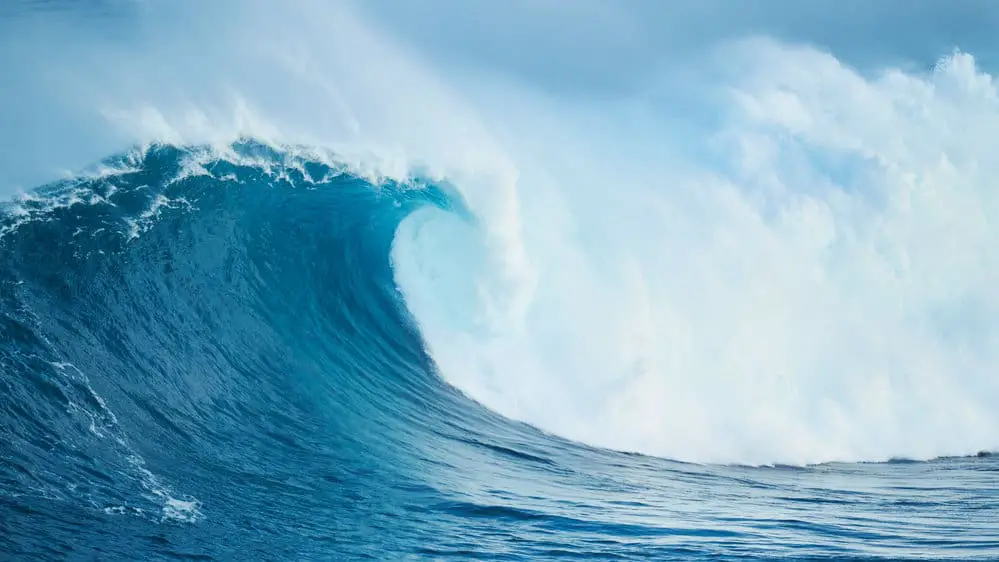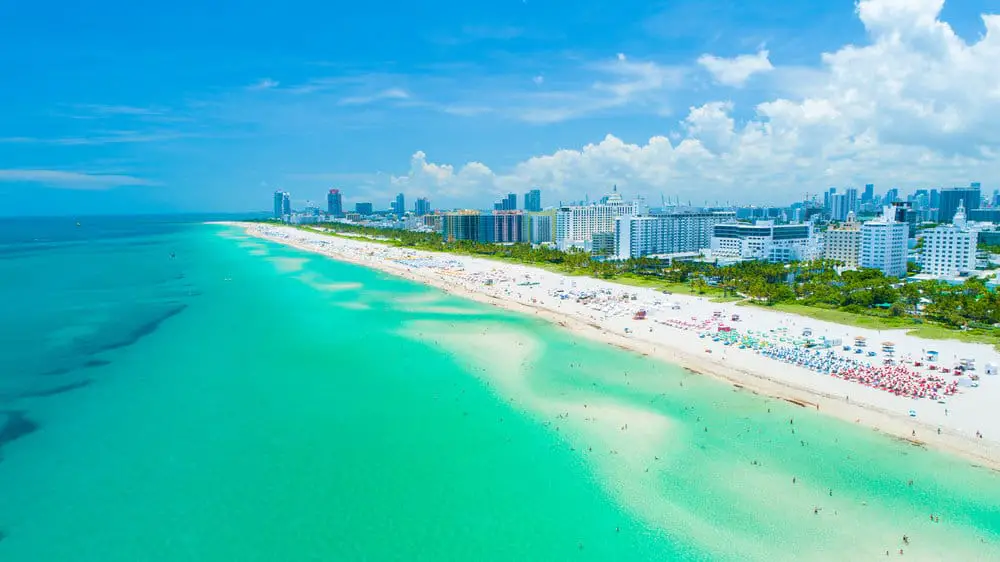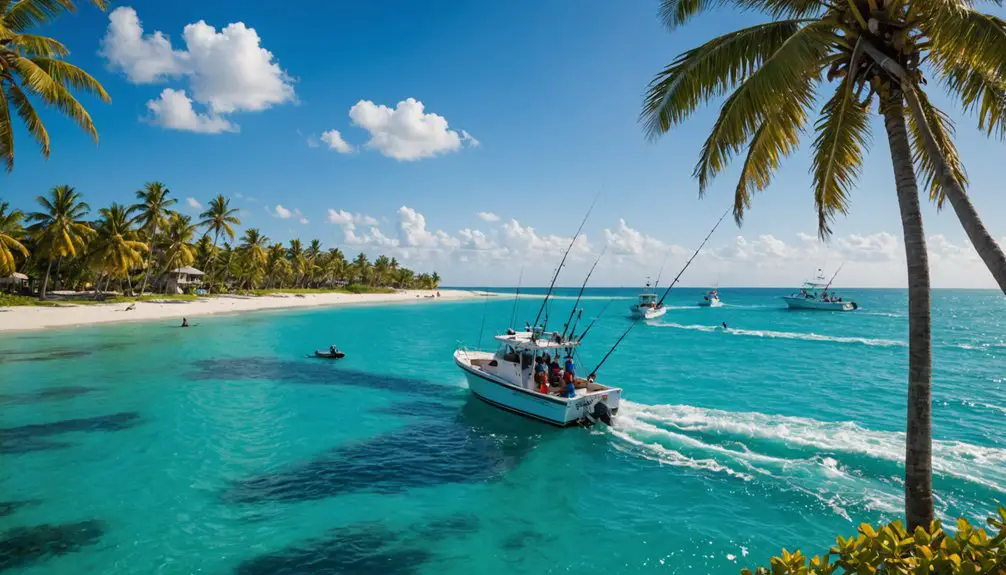When making plans for a Cancun vacation, the possibility of a tsunami hitting is probably the last thing on your mind. But if you’re planning a trip to the coast, it doesn’t hurt to get prepared. This can be as simple as finding out whether a tsunami can hit Cancun at all.
While tsunamis can happen in the Gulf of Mexico, the chance of one occurring in Cancun is far lower than in other parts of the world. However, tsunamis are hard to predict, so having a plan in place is always advised.
Planning a vacation takes a lot of forethought. You may have put thought into what you’re going to see and what you’ll need while you’re there but having a plan in place for emergencies is just as important. Below, you’ll find everything you need to know about tsunamis in Cancun so that you don’t find yourself underprepared.
Can Cancun Be Hit by A Tsunami?
Virtually any city on the coast has the possibility of being hit by a tsunami. A tsunami can occur in any large body of water that encounters a massive earthquake or another cataclysmic event. However, tsunamis in this region are rare. This is due to the lack of subduction zones in the area.
Earthquakes in the Caribbean and Gulf of Mexico occur along fault lines where the North American and Caribbean plates converge. The majority of Caribbean faults are strike-slip faults, which are unfavorable for tsunamis. This is due to the fact that land is not being displaced, but rather moving in opposing directions.
However, earthquakes aren’t the only cause of tsunamis. Marine landslides and volcanic eruptions can also cause them to occur. While very little is known about the threat of landslide-generated tsunamis from the Mexican coast, they are a possibility.
What Are the Chances of a Tsunami in Cancun?
While it is possible for a tsunami to occur in Cancun, the chances are very slim. Tsunamis generated by earthquakes do not appear to impact the Yucatan Peninsula where Cancun is located.
A total of 26 tsunamis have been recorded to hit Mexico since 1732. However, all of these have happened on the Pacific coast of the country. Since 1492, only 37 tsunamis are estimated to have occurred in the Caribbean Sea, with the last one taking place in 1946 after a magnitude 8.1 earthquake hit the Dominican Republic.
Do Tsunamis Happen in the Gulf of Mexico?
The Gulf of Mexico shares almost the same level of risk as the Caribbean Sea.
While earthquakes aren’t as much of an issue in this region, underwater landslides pose a greatest risk for a tsunami to occur on the Gulf Coast. Seismic data shows that earthquakes more than 600 miles away can trigger submarine mudslides that have the potential to create a tsunami. Still, the probability of that happening is extremely low.
When Was the Last Time Cancun Was Hit by A Tsunami?
There are no recorded instances of a tsunami hitting Cancun. However, there is evidence that suggests the Yucatan Peninsula was hit by a large tsunami some 1,500 years ago. While researchers are not sure what could have been the cause, they believe the height of the wave was at least 15 feet, if not higher.
Yet the threat of a tsunami in this area is still low. In fact, it is far more likely that Cancun would face a large hurricane than a tsunami.
There have also been reports of large seiches occurring in the Gulf of Mexico. These are waves caused by atmospheric disturbances and ground motion. A seiche can impact the coast, causing property damage and hazardous conditions for maritime traffic. These waves’ strong currents can harm and drown people, as well as damage and destroy vessels in ports.
Does Mexico Have a Tsunami Warning System?
A tsunami can happen unexpectedly. In the water, they can move at speeds of up to 500 miles per hour and have the potential to travel up to 10 miles inland. Even if you are on the other side of the world, a tsunami has the potential to reach you within a day.
This is why early warning systems have become of such importance. When the tsunami hit the Yucatan coastline 1,500 years ago, the population of the area was very light. Today, Cancun is one of the world’s most popular tourist destinations. A wave of that magnitude would result in a great deal of loss.
After the magnitude 9 earthquake off the Sumatra-Andaman Islands in 2004, U.S. Geological Survey and the National Oceanic and Atmospheric Administration (NOAA) responded with a real-time system to help improve earthquake and tsunami monitoring for the Caribbean Sea and Gulf of Mexico.
Mexico also has a seismic early warning system to track seismic activity and send out alerts for magnitudes over a certain threshold.
What are the Early Warning Signs of a Tsunami?
Many tsunamis occur with very little warning. However, there are some signs to be aware of that may help you avoid catastrophe:
- Rapid and unexpected recession of water
- A loud roar coming from the ocean
- A Shoal of sardines
- Experiencing a high magnitude earthquake
If you are vacationing in Cancun, it is a good idea to come up with an action plan in case of an emergency like a tsunami or earthquake. Have an evacuation plan in place as well as a way to get back in touch with family or friends if you become separated.
Final Thoughts
You should now have a better understanding of whether a tsunami can hit Cancun. Planning a vacation can be rough, and it is not always easy to have everything prepared beforehand. However, safety should always be the number one priority.
Though it’s been a while since a large tsunami has struck the Yucatan Peninsula—and its unlikely that one will anytime soon—it’s bound to happen again at some point. Your best bet is to come prepared. Know how to get to higher ground and set up a way to maintain contact with your loved ones. For more information on Cancun weather, click on the link.





